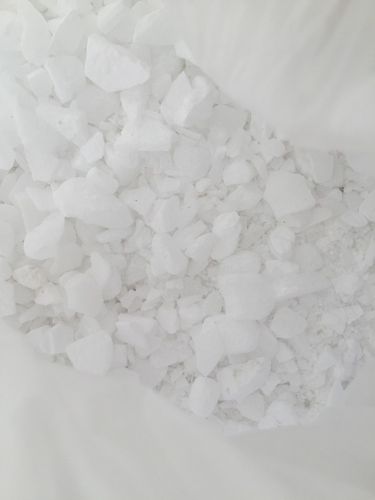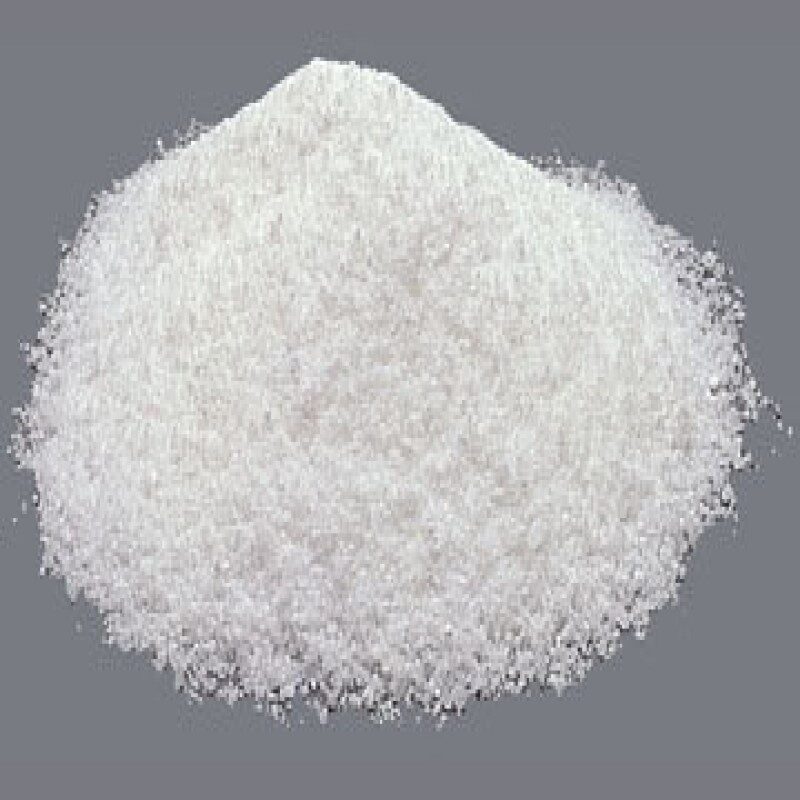Description
Remarks: The material complies as per above specification.
Uses: Ammonium carbonate may be used as a leavening agent. It also serves as an acidity regulator and has the E number E503. It can be substituted with baking powder, but this may effect both the taste and texture of the finished product.
Packing: 25 kg HDPE Bags/HDPE Drum.
For AMIZARA SPECILITY CHEMICALS LLP
MSDS
Ammonium Carbonate MSDS Sheet, Material Safety Data Sheet
SECTION 1. Product Identification
| Product Name & Other Names: |
Ammonium Carbonate |
| CAS No.: |
8000-73-5 or 10361-29-2 and 506-87-6 for Pure grade (NH4)2CO3 |
| EINECS EC Number: |
233-786-0 |
| Relevant uses and uses advised against (if any): |
Industrial Manufacturing. |
| Suppliers: |
As per letterhead. |
2.Hazards Identification
GHS, Globally Harmonized System Classification in accordance with 29 CFR 1910 Classification according to Regulation (EC) No 1272/2008:
- Acute toxicity, Oral Category 4
- Skin corrosion/irritation (Category 2)
- Serious eye damage/eye irritation Category 2A
- Hazardous to the aquatic environment, acute hazard Category 3
Labeling according to GHS & Regulation (EC) No 1272/2008
Hazard statements:
| H302: |
Harmful if swallowed. |
| H315: |
Causes skin irritation. |
| H319: |
Causes serious eye irritation. |
| H402: |
Harmful to aquatic life. |
Precautionary statements:
| P264 : Wash skin thoroughly after handling. |
| P270 : Do not eat, drink or smoke when using this product. |
| P273 : Avoid release to the environment. |
| P280: Wear protective gloves/protective clothing/eye protection/face protection. |
| P314: Get Medical advice/attention if you feel unwell. |
| P362: Take off contaminated clothing and wash before reuse. |
P301+P312: IF SWALLOWED: Call a POISON CENTER or doctor/physician if you
feel unwell. |
| P302+352: IF ON SKIN: Wash with soap and water. |
| P332+313: If skin irritation occurs: Get medical advice/attention. |
P305+351+338: IF IN EYES: Rinse cautiously with water for several minutes.
Remove contact lenses if present and easy to do – continue rinsing. |
P330: Rinse mouth.
P501 Dispose of contents/ container to an approved waste disposal plant. |
Classification according to EU Directives 67/548/EEC or 1999/45/EC:
| Hazard Symbols: |
Xn: Harmful
Xi: Irritant |
| Risk Phrases: |
R22: Harmful if swallowed.
R36/38 Irritating to eyes and skin. |
3. Composition/Information on Ingredients
| Product Name & Other Names: |
Ammonium Carbonate |
| CAS No.: |
8000-73-5 or 10361-29-2 and 506-87-6 for Pure grade (NH4)2CO3 |
| EINECS EC Number: |
233-786-0 |
4. First Aid Measures
Always seek medical attention after first aid measures are provided.
| Inhalation: |
Remove to fresh air. If not breathing, give artificial respiration. If breathing is difficult, give oxygen. Get medical attention. |
| Ingestion: |
Do not induce vomiting unless as directed by medical personnel. Never give anything by mouth to an unconscious person. Get medical attention. |
| Skin Contact: |
Immediately flush skin with plenty of water for at least 15 minutes. Remove contaminated clothing and shoes. Get medical attention. Wash clothing before reuse. Thoroughly clean shoes before reuse. |
| Eye Contact: |
Check for and remove any contact lenses. In case of contact, immediately flush eyes with plenty of water for at least 15 minutes. Cold water may be used. Get medical attention. |
5. Fire Fighting Measures
| Fire: |
Not considered to be a fire hazard. At fire temperatures it begins to corrode metals and may dissociate into ammonia, oxides of nitrogen and carbon dioxide. |
| Explosion: |
It is not considered to be an explosion hazard. |
| Fire Extinguishing Media: |
Use water spray, alcohol-resistant foam, dry chemical or carbon dioxide. Water spray may be used to keep fire exposed containers cool. |
| Special Information: |
In the event of a fire, wear full protective clothing and NIOSH-approved self-contained breathing apparatus with full face piece operated in the pressure demand or other positive pressure mode. |
6. Accidental Release Measures
| Personal precautions, protective equipment, and emergency procedures: |
Avoid breathing dust/fumes/gas/mist/vapors/spray. Ensure adequate ventilation. Use individual protective equipment (waterproof boots, suitable protective clothing, safety glasses, etc.). Restrict unprotected personnel from the area. Prevent any contact with hot surfaces. Do not approach facing the wind. Do not touch the spilled material. |
| Environmental precautions: |
Do not let the product enter drains, soil, or water sources.Methods and materials used for containment Cleanup procedures and Storage: |
| Small Spill: |
Use appropriate tools to put the spilled solid in a convenient waste disposal container. Finish cleaning by spreading water on the contaminated surface and dispose of according to local and regional authority requirements. |
| Large Spill: |
Contain spilled material. Cover with an inert, non-combustible absorbent material, (e.g. sand, earth, diatomaceous earth, vermiculite). Use personal protective equipment. Avoid dust formation. Avoid breathing vapors, mist, or gas. Ensure adequate ventilation. Avoid breathing dust. Use a shovel to put the material into a convenient waste disposal container. Do not let product enter drains. Pick up and arrange disposal without creating dust. Sweep up and shovel. Keep in suitable, closed. containers for disposal. |
7. Handling and Storage
| Precautions for safe handling: |
Apply according to good manufacturing and industrial hygiene practices. Ensure proper ventilation. Wash thoroughly after handling. Do not drink, eat, or smoke while handling. Avoid contact with skin, eyes, and clothing. Minimize dust generation. Avoid breathing dust/fumes/gas/mist/vapors/spray. Avoid
contact with eyes, skin, and clothing. Keep container tightly closed. Avoid ingestion and inhalation. Use individual protective equipment (waterproof boots, suitable protective clothing, safety glasses, etc.). Prevent any contact with hot surfaces. |
| Conditions for safe storage, including any incompatibilities: |
Store in cool, dry, and ventilated area away from heat sources and protected from sunlight in tightly closed original container. Keep air contact to a minimum. Do not leave the material container open. Store protected from heat, sparks and ignition sources and incompatible materials. Avoid contact with skin and eyes. Avoid inhalation of dust/mist/vapor. Do not store with incompatible materials like concentrated acids, strong bases, oxidizing agents. Store away from sources of heat, moisture. |
8. Exposure Controls/Personal Protection
| Airborne Exposure Limits: |
Not established |
| Ventilation System: |
A system of local and/or general exhaust is recommended to keep employee exposures below the Airborne Exposure Limits. Local exhaust ventilation is generally preferred because it can control the emissions of the contaminant at its source, preventing dispersion of it into the general work area. Please refer to the ACGIH document, Industrial Ventilation, A Manual of Recommended Practices, most recent edition, for details. |
| Personal Respirators (NIOSH Approved): |
If the exposure limit is exceeded and engineering controls are not feasible, a half face piece particulate respirator (NIOSH type N95 or better filters) may be worn for up to ten times the exposure limit or the maximum use concentration specified by the appropriate regulatory agency or respirator supplier, whichever is lowest. A full-face piece particulate respirator (NIOSH type N100 filters) may be worn up to 50 times the exposure limit, or the maximum use concentration specified by the appropriate regulatory agency, or
respirator supplier, whichever is lowest. If oil particles (e.g. lubricants, cutting fluids, glycerin, etc.) are present, use a NIOSH type R or P filter. For emergencies or instances where the exposure levels are not known, use a full-face piece positive-pressure, air-supplied respirator. |
| Skin Protection: |
Wear impervious protective clothing, including boots, gloves, lab coat, apron or coveralls, as appropriate, to prevent skin contact. |
| Eye Protection: |
Use chemical safety goggles and/or full face shield where dusting or splashing of solutions is possible. Maintain eye wash fountain and quick-drench facilities in work area. |
9. Physical and Chemical Properties
| Appearance: |
White solid. |
| Odor: |
Strong ammonia odor. |
| Odor threshold: |
Not available. |
| pH: |
>9 |
| Relative density: |
Not available. |
| Melting Point: |
58C |
| Initial boiling point and boiling range: |
Not available. |
| Flash point: |
Not available. |
| Auto-ignition temperature: |
Not available. |
| Decomposition temperature: |
Not available. |
| Upper/lower flammability or explosive limits: |
Not available. |
| Vapor Pressure (mm Hg): |
1.0 @ 160C (320F). |
| Vapor Density (Air=1): |
1.9 |
| Evaporation rate: |
Not available. |
| Flammability (solid, gas): |
Not available. |
| Partition coefficient: n-octanol/water: |
Not available. |
| Solubility: |
Soluble in water. |
| Viscosity: |
Not available. |
10. Stability and Reactivity
- Stability: Stable under ordinary conditions of use and storage.
- Hazardous Decomposition Products: Involvement in a fire causes decomposition to form carbon dioxide and ammonia.
- Hazardous Polymerization: Will not occur.
- Incompatibilities: Concentrated acids, strong bases, oxidizing agents, heat.
11. Toxicological Information
Acute toxicity:
LD50 Oral – Rat – male and female: 2.150 mg/kg
LD50 Oral – Rat – female: 1.800 mg/kgLD50 Dermal – Rat : > 2.000 mg/kg
LD50 Intravenous – Mouse: 96 mg/kg
Carcinogenicity: The product is not classed as carcinogen by IARC, ACGIH, NTP, OSHA.
Mutagenic Effects: Not available.
Developmental Toxicity: Not available.
Reproductive Effects: No information available.
12. Ecological Information
Toxicity to fish: LC50 (96 h) 61 mg/l, Oncorhynchus mykiss (Flow through.) Literature.
Toxicity to daphnia and other aquatic invertebrates: EC50 (48 h) 63.7 mg/l, Daphnia magna.
Persistence and Degradability: Degradable.
Mobility: Mobile due to water solubility.
Bioaccumulation/ Accumulation: Not likely to accumulate.
Results of PBT and vPvB assessment: This substance/mixture contains no components considered to be either persistent, bioaccumulative and toxic (PBT), or very persistent and very bioaccumulative (vPvB) at levels of 0.1% or higher.
13. Disposal Considerations
Whatever cannot be saved for recovery or recycling should be managed in an appropriate and approved waste disposal facility. Processing use or contamination of this product may change the waste management options. State and local disposal regulations may differ from federal disposal regulations. Dispose of container and unused material in accordance with legal requirements.
14. Transport Information
DOT (US) ADR/RID: Not Regulated
IMDG: Not dangerous goods
IATA: Not dangerous goods.
15. Regulatory Information
USA:
- SARA 302: No chemicals in this material are subject to the reporting requirements of SARA Title III, Section 302.
- SARA 313: This material does not contain any chemical components with known CAS numbers that exceed the threshold (De Minimis) reporting levels established by SARA Title III, Section 313.
- SARA 311/312 Hazards: Acute Health Hazard. See section 2.
- California Prop. 65 Components: This product does not contain any chemicals known to State of California to cause cancer, birth defects, or any other reproductive harm.
16. Other Information
European Labeling in Accordance with EC Directives:
- H302: Harmful if swallowed.
- H315: Causes skin irritation.
- H319: Causes serious eye irritation.
- H402: Harmful to aquatic life.
Classification according to EU Directives 67/548/EEC or 1999/45/EC:
Hazard Symbols:
Risk Phrases:
- R22: Harmful if swallowed.
- R36/38 Irritating to eyes and skin.
Disclaimer:
Our company provides this SDS information sheet contained herein in good faith but makes no representation as to its comprehensiveness or accuracy. This MSDS sheet is intended only as a guide to the appropriate precautionary handling of the material by a properly trained person using this product. Individuals receiving the information must
exercise their independent judgment in determining its appropriateness for a particular purpose.




